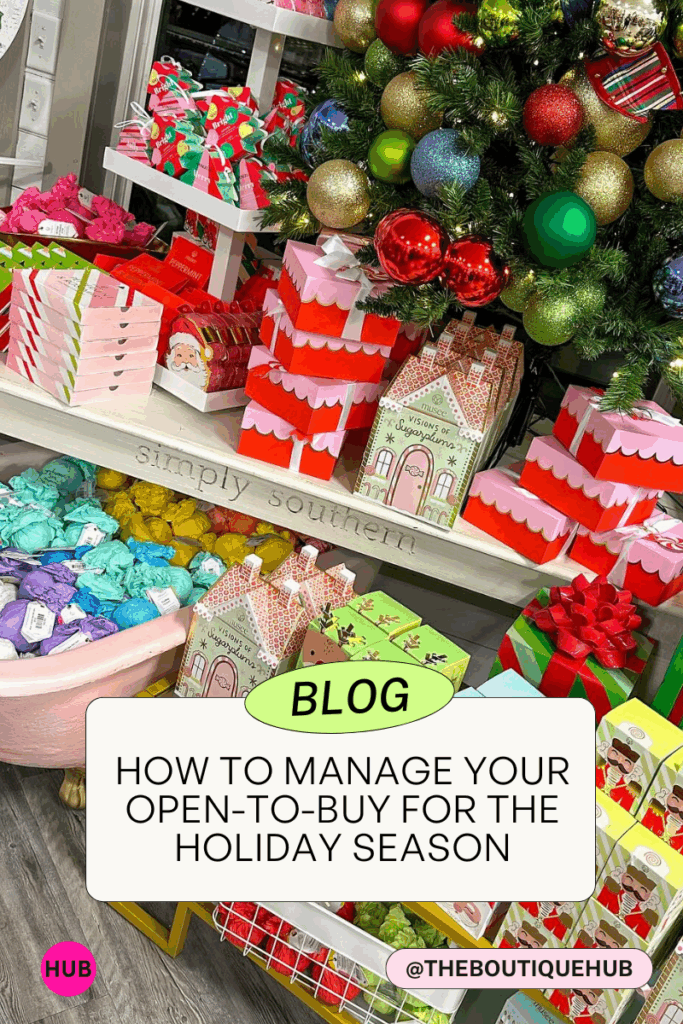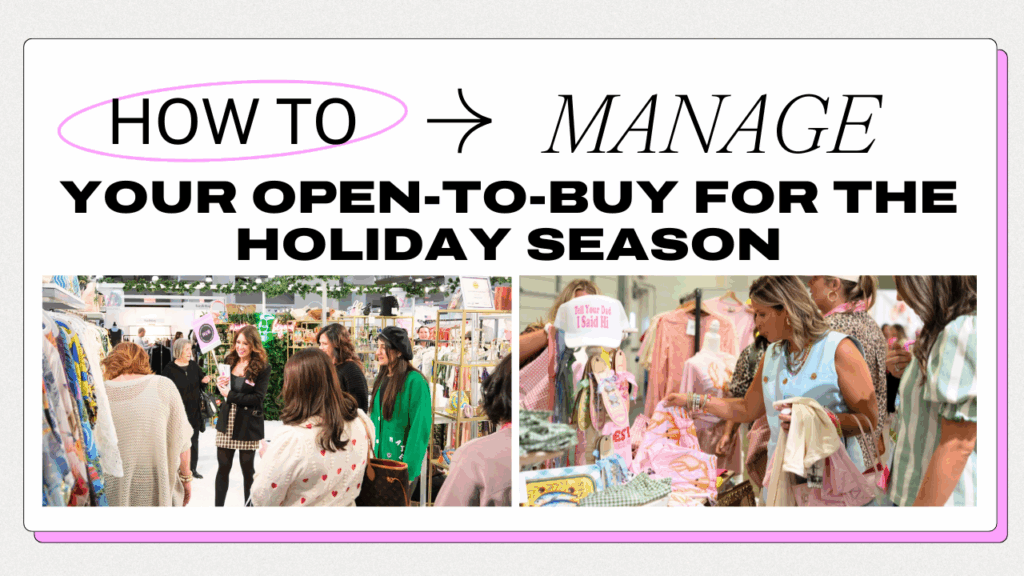The holiday season is the Super Bowl of retail. For boutique owners and small business retailers, it’s the biggest opportunity of the year to maximize sales and delight customers. But it can also be the riskiest time if your inventory strategy isn’t dialed in.
That’s where open-to-buy (OTB) comes into play.
Managing your open-to-buy before holiday demand hits can mean the difference between finishing the year with cash flow and profits or sitting on piles of unsold merchandise come January. Let’s break it down.

What is Open-to-Buy?
Open-to-buy is a retail planning tool that helps you calculate how much inventory you should buy in a given period—based on your planned sales, existing stock, and desired turn rate. In simple terms, it answers:
- How much inventory do I need to hit my sales goals?
- How much can I afford to buy without overstocking?
- When is the right time to bring new merchandise in?
For the holidays, your OTB plan ensures you have just enough of the right inventory—not too much, not too little.
Why Open-to-Buy Matters Before Holiday Demand
- Customer Expectations Are Higher
Shoppers want fresh, giftable, and seasonal products. OTB planning ensures you can offer variety without blowing your budget. - Cash Flow is Tight
Between marketing expenses, extra staffing, and holiday promotions, money goes fast. A good OTB plan prevents tying up cash in slow-moving stock. - Timing is Everything
If you order too late, the shelves sit empty. Too early, and you risk markdowns before December even hits. OTB gives you a roadmap for when to place orders.
How to Manage Open-to-Buy for the Holidays
1. Start with Sales Forecasting
Look at last year’s Q4 numbers, plus current growth trends. How much do you realistically expect to sell in November and December? Use this as your sales goal baseline.
2. Calculate Your Current Inventory Position
How much inventory do you already have on hand and on order? Subtract this from your sales goal to find your “open” dollars.
3. Factor in Turn Rates
Holiday inventory should move quickly. Decide how often you want to turn inventory (every 30, 45, or 60 days) and use that to shape your OTB budget.
4. Break It Down by Category
Don’t lump everything together. Create OTB budgets for apparel, accessories, giftables, home, etc. That way, you don’t accidentally overbuy in one category and underbuy in another.
5. Adjust Weekly
The holidays are dynamic. Track your sell-through weekly and adjust your OTB. If sweaters are flying off the shelves, reallocate dollars from slow-moving categories.
Pro Tips for a Strong Holiday OTB
- Build in a Cushion: Leave 10–15% of your OTB budget flexible for last-minute reorders or trend-driven buys.
- Negotiate with Vendors: Ask about ship dates, reorder possibilities, or small-batch orders to keep cash flow healthy.
- Plan for January: Don’t spend 100% of your OTB on holiday. Keep funds for fresh January stock to keep customers coming back after Christmas.
When you take control of your open-to-buy, you take control of your profits. Instead of guessing what to stock, you’ll have a clear plan that balances customer demand with financial health.
That’s the power of OTB—especially before the holidays.
Want Help Managing Your OTB?
Inside The Boutique Hub Membership, we give you the exact calculators, trainings, and strategies you need to build a profitable open-to-buy plan. Our members also get access to:
- Proven holiday inventory calculators
- Step-by-step training on OTB and cash flow
- A community of thousands of boutique owners to compare numbers and strategies with
Don’t head into Q4 guessing. Join the membership today and get the tools to manage your open-to-buy like a pro.
Don’t get left behind—your growth starts here. → Join Now


